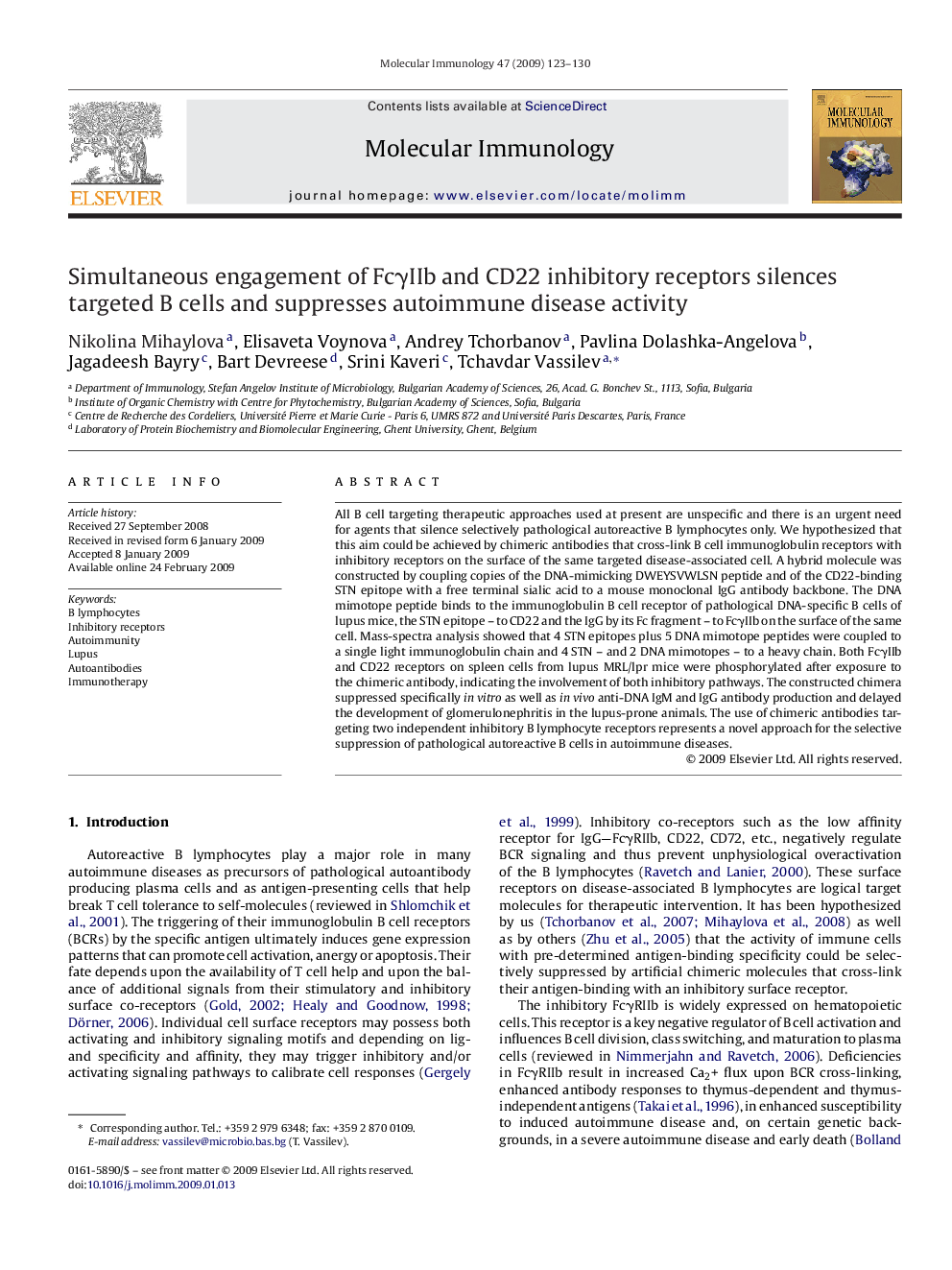| Article ID | Journal | Published Year | Pages | File Type |
|---|---|---|---|---|
| 2831377 | Molecular Immunology | 2009 | 8 Pages |
All B cell targeting therapeutic approaches used at present are unspecific and there is an urgent need for agents that silence selectively pathological autoreactive B lymphocytes only. We hypothesized that this aim could be achieved by chimeric antibodies that cross-link B cell immunoglobulin receptors with inhibitory receptors on the surface of the same targeted disease-associated cell. A hybrid molecule was constructed by coupling copies of the DNA-mimicking DWEYSVWLSN peptide and of the CD22-binding STN epitope with a free terminal sialic acid to a mouse monoclonal IgG antibody backbone. The DNA mimotope peptide binds to the immunoglobulin B cell receptor of pathological DNA-specific B cells of lupus mice, the STN epitope – to CD22 and the IgG by its Fc fragment – to FcγIIb on the surface of the same cell. Mass-spectra analysis showed that 4 STN epitopes plus 5 DNA mimotope peptides were coupled to a single light immunoglobulin chain and 4 STN – and 2 DNA mimotopes – to a heavy chain. Both FcγIIb and CD22 receptors on spleen cells from lupus MRL/lpr mice were phosphorylated after exposure to the chimeric antibody, indicating the involvement of both inhibitory pathways. The constructed chimera suppressed specifically in vitro as well as in vivo anti-DNA IgM and IgG antibody production and delayed the development of glomerulonephritis in the lupus-prone animals. The use of chimeric antibodies targeting two independent inhibitory B lymphocyte receptors represents a novel approach for the selective suppression of pathological autoreactive B cells in autoimmune diseases.
